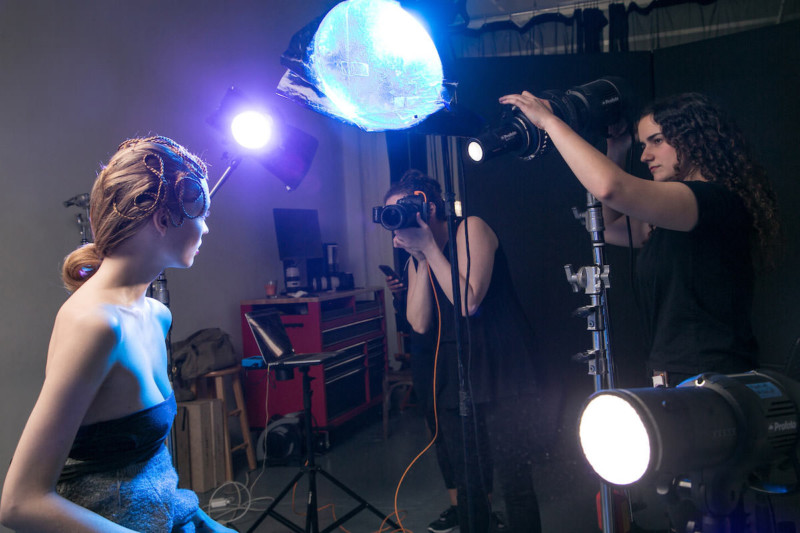
I firmly believe that assisting a photographer whose work you admire is one of the greatest learning opportunities available to us and can provide invaluable experience.
I remember the first time I was on set with a ‘real’ fashion photographer. I felt like entirely new universes were opening up before me as I watched him problem solve, control the light, interact with models, compose his frame and more. There were endless opportunities to learn just by watching and assisting. You don’t just learn what they do and how they do it, but how they think!
Today I am fortunate enough to be at a point in my career where I regularly have people reach out requesting to assist me during a shoot. I try to reciprocate by imparting as much knowledge to them as I can while on set.
Because I believe assisting can be such an incredible opportunity, I want to take a moment to give aspiring photographers (and assistants) a little bit of advice on how to land a job as a photography assistant. I hope the tips I’ve provided here (while they can be a little intimidating) give you the inspiration and confidence to be the best that you can be on set.
I’ve also asked two of my fellow NYC photographers, Chris Knight and Drew Gurian, to share their thoughts on assistants as well.
So as we get started talking about assisting, first, I want to cover how to make a good impression with a photographer when reaching out and how to get your foot in the door for their first opportunity to be on set. I’ll give a few suggestions for tactics for catching their attention and the few things you must avoid doing at all costs!
Next, once you have the opportunity to assist, you need to impress that photographer and get them to invite you back. I want to share certain on-set expectations are and how to wow the photographer you are assisting with a few essential considerations. I’d also like to share some of the ‘rules’ I provide to assistants. Professional assistants will already be aware of these things, but if I am working with a student or someone brand new to assisting, I provide them these guidelines so everyone is on the same page. This will help you better understand the expectations of any photographer you may assist.
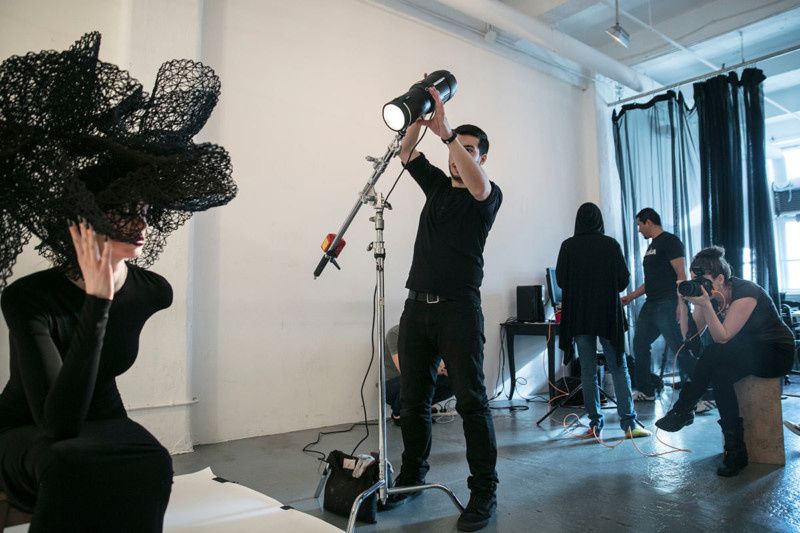
Part 1: Getting Your Foot in the Door
Let’s say that you are interested in assisting a photographer. You love their work or business acumen… now what? Your first instinct may be to email them, but I actually find that emails are easily ignored or lost. Instead, if you have an opportunity to meet them face to face, do it!
One of the best ways to make an impression is to find an opportunity to meet a photographer in person. Are they going to be at a local event? Are they giving a presentation? A gallery show? If there is an opportunity to make some ‘face time’ and make a personal connection, this is going to help you get miles ahead of the rest.
“Another really good avenue is meeting photographers at industry events. I’d much rather meet someone out at an event or industry happy hour than via email, and can pretty find out whether we’ll work out well together in-person,” says Drew Gurian.
I know that when I meet someone it is always reassuring to get a sense of their sincerity, willingness to work hard, and overall personality. When I hire an assistant their personality is one of the most important things I am aware of and if they will work well with my team.
When someone meets me, makes a good impression and sends a follow-up email, they often move toward the top of the list especially when I have needs for an assistant in the near future.
Interning
I have paid internships 2-3 times per year, and many photographers also have such arrangements. An intern will dedicate their time approximately 6 months and then graduate to an assistant (paid per job rather than a monthly stipend). My interns learn the ins and outs of how I light, create a setup and work with other creatives, so they are my natural first choice for assistants. All of my regular paid assistants began as interns and become an important part of my assisting team. At times, however, I do need to hire extra assistants, and this is where persistence and networking come into play.
If you have no experience with different light gear, metering, setting up scrims or multi-light setups, then perhaps you need to start with an internship to help build up your skillset before marketing yourself as an assistant. Companies in NYC like DigitalTransitions also offer assistant and digital tech book camps to help catch you up to speed more quickly. Also, offer to assist an aspiring photographer (who may also be working as an assistant) to get a strong knowledge base for what would be expected of a ‘real’ assistant.
Persistence & Networking
Persistence is KEY. I cannot overstate this. You must seek to maintain that delicate balance between persistence and being annoying. I currently already have 3 regular assistants that I rotate between, so I’m usually all covered and don’t need an extra hand. Sometimes, however, I am doing a shoot where I need three assistants and at least one of mine is already booked. This is your opportunity!
“The best way to meet photographers is to reach out and be persistent, but know that there’s a fine line between persistence and being an annoyance,” says Gurian. “I get a good bit of emails from aspiring assistants, and though I do try to respond to everyone, they do sometimes get lost for a bit. Sometimes I end up meeting for coffee or a beer with them, and that’s a great way to gain some face time. The deal breaker for me is if an assistant comes across as overly persistent to the point of it becoming an annoyance, arrogance, or a sense of being really unprofessional.”
But how do I select who will assist? First of all, I take recommendations from my other assistants. Have they been on a set before and seen an assistant that they thought would be a good fit. For this reason, it is beneficial to always be your best and professional on ANY set and also good to network with other assistants. Here in NYC, we have various mixers for photo assistants as well as meetings for photo organizations. This is a great chance to make relationships and perhaps get future recommendations. It is quite common for a photographer to ask an assistant for recommendations if that assistant is unavailable.
The next way I will select an assistant is through my emails. If I have been chatting with a potential assistant I have met in person (and they were memorable) I will reach out to them directly. If no one comes to mind, I select one of the most recent emails I’ve received. See why persistence matters? Who is at the top of my emails? Whoever was persistent enough to keep following up.
Emailing
When you reach out via email to a photographer, there are certain elements of etiquette you may want to keep in mind. There are certain things people can include in an email that makes me more likely to hire them, and other things that immediately disqualifies them. Let’s take a look at some of my email do’s and don’ts.
Email Dos
- Show knowledge of the photographer: A generic ‘please hire me to assist you email’ will immediately get you blacklisted. If you couldn’t take enough time to send out a personalized, dedicated email to a photographer, you obviously don’t care about their work or their business that much. They are just another name and opportunity. Instead, write a personalized email that shows you pay attention to that photographer; congratulate the photographer on one of their recent accomplishment, mention why you like some of their recent work, mention attending one of their gallery shows or anything else that shows you have taken a personal interest.
- Focus on what you have to offer: Don’t write all about why you need that photographer, but instead write about any relevant skill set you bring to the table. Are you familiar with CaptureOne, Profoto, Broncolor, grip, etc? If so, mention it. If you are new to equipment and software, instead focus more on your work ethic. Let them know you are willing to put in long hours, manual labor, and work to anticipate their needs.
- Offer a trial: One way to make it easier for a photographer to work with you is to offer a ‘trial day’… a day where you will come back, help out, and they can see how you work on set. Make it low (no) cost and low-commitment so that on set you can really shine and demonstrate your value to the team.
Email Don’ts
- Don’t be long-winded. If it is extremely long it shows you do not respect the photographers time. Be long enough to be personable and show your interest, but not so long that it feels like reading a novel!
- Don’t forget to spell check and grammar: If I receive an email where my name is wrong, the spelling is incorrect or the grammar is horrible, it shows you clearly don’t pay attention to details. I also certainly will not consider you as an assistant because I can’t trust you to send out important business emails or to double check other small details.
- Don’t brag: To be honest, your skill level in photography is mostly irrelevant to your ability to assist. If you’ve received awards or have a college degree in photography, it generally has no bearing on your performance as an assistant. So… don’t brag too much about why you are special. Instead, let the photographer know what you have to offer them and why you’d be an asset. Also focus on what you find special about the photographer. This will get you a lot further. Plus, when you brag a photographer may get the impression that you think so highly of yourself that you will be above doing certain tasks OR that you are so good that you are competition (and they will not want you on set).
“I personally don’t like the ‘I’d like to come assist you once or twice’,” says Chris Knight, who also feels it’s important to show you want to make a commitment to working with and understanding a photographer. “Shadowing a shoot is the same thing. I can understand if not everyone can make a time commitment to being a regular assistant, but that’s where the value is. The relationship needs to have value both ways, and someone coming in once or twice isn’t really of as much value to me. Someone who writes looking for a more dedicated position always goes higher in the list because they are more invested in the experience. If you just want to watch someone work, you might just have to settle for youtube. If you want to learn how someone THINKS, assist long-term.”
Part 2: Making an Impression
So, you’ve got your foot in the door and a photographer has agreed to have you on set. What next? What can you do to make the best impression possible and become an important aspect of the team?
Fundamentally you want to remember that it is your job to make their lives easier. Yes, this includes setting up lights, changing lenses, and the usual ‘camera stuff’. But a great assistant it is so much more than that.
The most important word you can remember is anticipation. Can you get inside the photographer’s head and anticipate what they need before they even ask for it? Do you see them backing up because the lens they have is a bit too long? Have the wider lens choice available for them if they want to switch. Do you see a photographer standing on their tiptoes trying to get a higher angle? Grab a step stool or an apple box to help them get a higher angle. The more you work with a photographer the more you’ll be able to know what they need before they need to ask for it.
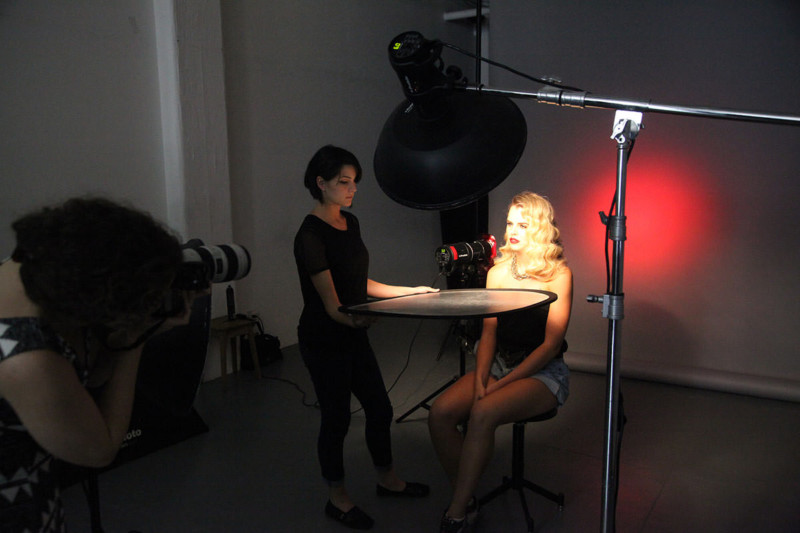
“A great assistant isn’t reactionary, they are anticipatory,” says Chris Knight. “It’s why want someone that understands how I think – they can act as an extension of my brain. A great assistant doesn’t stand around being told what to do, they take initiative. Their work is mostly irrelevant. I want someone who is on-time (that’s a big one), works hard, has a good attitude and doesn’t complain. Don’t be on your phone unless it’s a clearly established break. Anyone can do those things. Be a problem solver. If I’m on the ground for the angle, roll up a towel so I can put my head on it. If I’m about to back up into a light, catch me. Rogue stinger? Fix it. Random drink too close to a computer? Move it. All the little things make a big difference.”
It isn’t that a photographer is ‘above’ changing their lenses or grabbing an apple box. Instead, it is because their energies should be focusing on getting the shot – the composition, the expression, and the lighting. Give them back as much energy as possible so they can pour it into the success of the final product.
One of the best assistants I ever had was a professional assistant in Los Angeles. He showed up on set with a workman’s belt with a multi-tool, gaffers tape, gloves, a small flashlight, and a variety of other extras he had discovered helped him do his job better. It was an instant “WOW” factor. He really was treating this job like a job, not just a stepping stone to the next opportunity for himself. He was there for me and to make my life easier.
At one point I was kneeling on the ground shooting and the next thing I knew he had a small yoga-mat for me to kneel on. I don’t even know where it came from! When I couldn’t quite get the right angle, the next thing I knew there were three apple boxes for me to choose from to help get the height right. I was in heaven. You, too, can make this impression and don’t even have to go that far.
Personality and the ‘vibe’ on set are also extremely important.
“My expectations on set are seemingly pretty simple,” says Gurian. “First and foremost, I pride myself on working with a great crew and presenting my entire team as really cool, down to earth, and easy to work with. Everyone’s got to have a great attitude and there’s zero ego allowed on set, or it’s not going to work. We’re a team, and everyone’s got to be easy going. At the same time, I expect my assistants to know the gear inside and out and be able to troubleshoot when shit hits the fan. There are obviously different levels of assistants, but speaking to a first assistant role, they’re my second set of eyes on set. If a flash doesn’t fire, if something looks strange in the photo and I’m not noticing it, if a piece of the talent’s wardrobe needs fixing, etc. When it’s go time, everyone has to be on their A-game.”
Part 3: Know the Expectations
Periodically I have new assistants or interns on set, and I want everyone to be on the same page about the ‘rules’ and expectations when working with me. For that reason, I’ve created the assisting guidelines below that I share with anyone new to working with me, and I’d like to share them with you! I am certain I am not the only photographer with these similar expectations. Some people may be a bit more formal, so more laid back, but overall these are safe guidelines to keep in mind.
While some things may seem a bit strict, we always have fun and a great time on set. When everyone understands what is expected of them and their roles, it helps everything go even more smoothly.
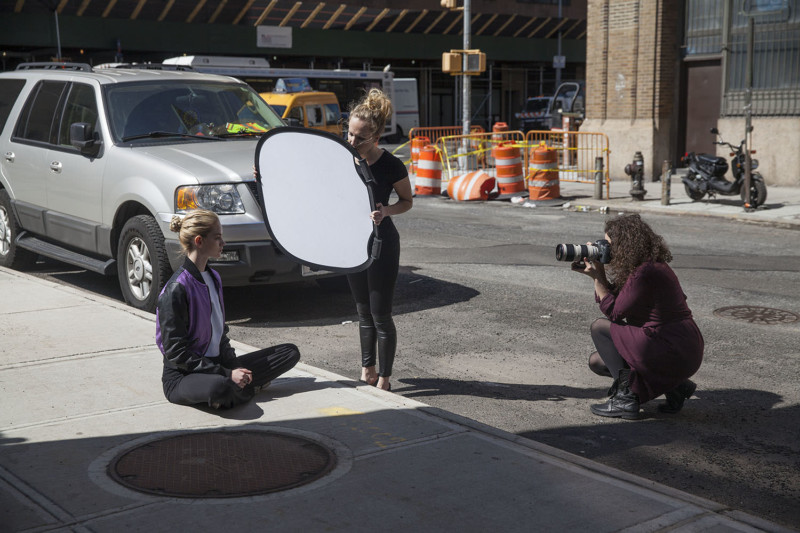
Timeliness
Be on time. No excuses. I rely on my assistants for the day to go smoothly, and if you are late or unavailable this can really slow up the flow of a day. Know that trains get delayed, there is traffic, bad weather, etc. You can always show up early and begin cleaning up, setting up, organizing, or familiarizing yourself with new gear.
Clothing
Assistants should dress in black. If not black then they should be in solid, dark colors with no logos. There are valid reasons for this. First, dark clothing prevents any unwanted color casts on the skin of the subject if you are holding a reflector or standing nearby. Next, it keeps a mood of professionalism on the set. Black also keeps the focus where it should be– on the client and creative process. Finally, black looks best for assistants to wear in behind the scenes photos and videos.
Safety
Safety is a priority. If you see a cord that could be a danger, move it. If you see a ladder that is not stable, fix it. Always put sandbags on the main light, especially with a boom arm. The arm should always be out over the longest leg of the stand, and the sandbag should go on that leg (and perhaps as a counterweight on the boom as well). Please look up ‘proper sandbag’ placement if you are unsure.
Tidy Set
- The set should always be kept tidy. Messy cords should be moved or put away. Unused modifiers or lights should be placed neatly to the side. Anything that would be in the way or a visual distraction must be handled. As the set is always changing, things will constantly be shuffled around throughout the day.
- When grabbing gear or moving things, at the end of the day everything should go back to where it was unless I say otherwise.
- Expect to come in early and leave late, cleaning up. I do not consider you a maid, but at the end of the day, all garbage should go out to the trash and new bags placed in the trash bins. Sweep up the floor, and wipe down surfaces – respect the space!
- Drew mentioned this as well, saying: “The best assistants are those who keep a clean, organized and safe set. Are all the cords neatly taped down? Is the digital cart organized? Do all the lights have sandbags?”
Assisting Me
- The keywords to assisting are ‘attention’ and ‘anticipation’.
- Attention: Pay attention to my habits. When do I switch lenses? When do I need help moving the light? If I am constantly moving the light, maybe you should stand by it to assist in this particular task. Where are you most useful. Not only will paying attention make you more useful as an assistant, but it will also teach you more about how I think when I shoot (and thus you learn!).
- Anticipation: When you pay attention to my shooting habits and behaviors, then you should begin to anticipate my needs. You’ll know when I need a higher angle and when to grab me an apple box to stand on. You’ll be ready to pass me a lens when I need a different focal length. And so on. Truly effective assistants anticipate.
Distractions, Professionalism, Other Etiquette
- Phones: Assistants should not often be on their phone. Even during downtime there are always things to do and it also can create an overall appearance of lack of professionalism when there are clients on set.
- Please keep distractions to a minimum. While I definitely want you to learn and have a good time, this day is ultimately about the shoot. Save most questions until the end of the day. Please avoid talking about personal life or controversial topics to clients/subjects/creative teams. The wrong topics can completely ruin the mood or offend a client. The best thing to do is to NOT engage in conversation with the client unless they directly bring up a conversation with you. Overall I tend to prefer assistants who are quiet on set, even if they are talkative in ‘real life’. This doesn’t mean you can’t have a personality or be yourself, just prioritize a professional working environment. I have had many assistants on set that I never invited back because they didn’t follow this rule.
- Always be respectful with your language and subject matter.
- Place the needs of the photographer, client and model first.
- Yes, we have fun on sets. I may sing, dance, and laugh… but this is a workplace. Always handle yourself in a professional and respectful manner.
- Don’t eat lunch until ‘lunch break’ has been called. As soon as people are finished with food, start cleaning up.
- Lounging is NOT encouraged. Sure, there are times to rest and relax, but just ‘hanging out on the couch’ is not the job (or leisure) of an assistant. A general rule is that if I am not sitting or relaxing, you probably shouldn’t be either. See what else you can do on set to make things go more smoothly. That may be preemptively cleaning or organizing.
- Opinions: If you notice something on set that you think you should draw attention to it, mention it to me quietly so the client does not hear. I don’t want you drawing attention to any problems, especially if doing so would make the client unhappy. Though this may sound harsh, for the most part, if you are not asked for an opinion, don’t give it. By stating an unsolicited opinion this may cause a client to change their mind or for me to become distracted. Instead, when you learn things I like/don’t like (like maybe a wrinkle in the background or overexposed highlight), mention it to me quietly. Comments like “I don’t like this shirt” or “I think the lighting doesn’t work” are absolutely not welcome.
Questions
If you don’t know how to do something, don’t be afraid to ask! That being said, I definitely recommend asking another assistant or trying looking it up online. Constantly asking questions is a distraction, so try to save more in-depth questions until the end of the day.
Behind the Scenes, Social Media
- Always ask if you are allowed to shoot and/or post behind the scenes. Sometimes the project requires you NOT take or share any images from the shoot. Ask first. Usually your phone should not be out unless I have requested you shoot BTS.
- If you take any behind the scenes images, they must ALWAYS include a behind the scenes element like light stand, photographer, makeup artist brush, etc. NEVER shoot and/or post anything that is just a shot of the model.
- I may ask you to capture behind the scenes for me. Please know this is an important business task for purposes of social media and doesn’t grant permission to be on your phone all day.
Misc Tasks
- I will ask you to do a wide range of tasks throughout the day. Some are educational while others ‘just must be done”. This may range from cleaning to picking up lunch, to setting up lights, to ordering equipment, to holding a reflector, to charging batteries, to monitoring Lightroom, and more. I know not everyone’s skill levels are the same, and I will adjust the tasks accordingly or teach you what is required.
- Other tasks will be asked of you along the way. I never assign you anything that I have not done myself at some point. All of these elements are important parts of the learning process. They help you as an entrepreneur, build work-ethic, and also your knowledge as a photographer. More tasks may be added to this list along the way.
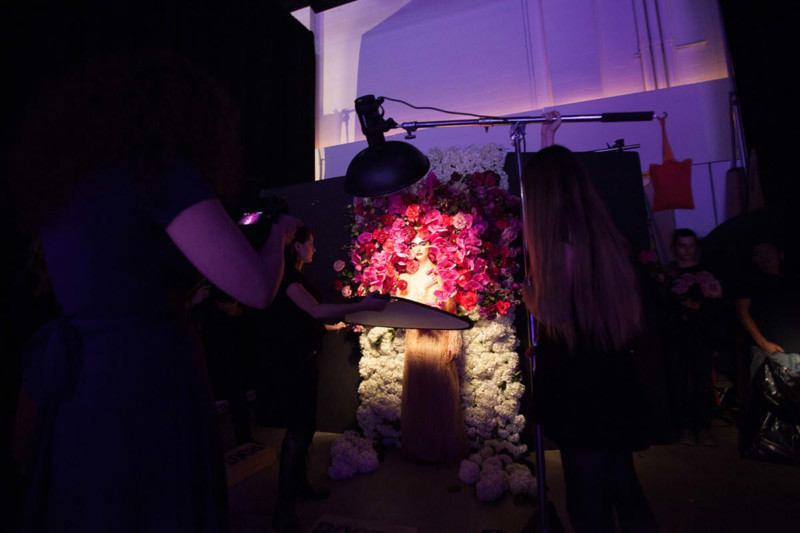
In Conclusion
Many (if not most) of the greatest and most successful photographers started their careers assisting. It gives you an insight, a work-ethic and education you simply cannot get elsewhere. If you are serious about making it as a photographer, know that success doesn’t come easy and you don’t start at the top. Yet when you start as an assistant this is your opportunity to learn best practices (technical and business) from those who have already navigated the world of photography and found what works! Research the photographers that have the type of style or clients you aspire to. Find those who have either a strong technical skill set, brilliant business mindset, or (better yet)… both! Working for them and understanding how their brains work will really get you started on your path toward success.
If you’ve assisted before, how did you get your foot in the door?
If you’re a photographer who has worked with assistants, what stood out and made an impression?
I would love to hear some of your experiences!
About the author: Lindsay Adler is a beauty and fashion photographer based in New York City. The opinions expressed in this article are solely those of the author. Adler is a Canon Explorer of Light. You can find more of Adler’s work on her website, blog, Facebook, Twitter, and Instagram. This article was also published here.